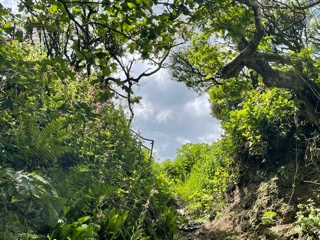There is a large hole in the amount of available land to hit UK tree-planting targets, NGOs urgently call on Corporate Landowners to get involved to accelerate action.
New eco-transparency platform Vana finds the corporate landowners who own 130.9% of potential woodland opportunities land needed to hit England tree-planting targets
The UK has set out ambitious targets to establish forests in areas where there was no previous tree cover. For England, this is 180,000 hectares (336,372 football fields) by 2042. Recently the UK Government has committed to 30,000 hectares per year by the end of this Parliament. But the targets are behind plan[3], as it is proving difficult to access available land. Whilst officials have knowledge of where suitable land is geographically located[4], the challenge is the lack of knowledge of who owns it.
However, the game changed when HM Land Registry made their corporate land ownership data for England and Wales available for innovative start-ups. CEO Jaya Chakrabarti of B Corp tech social enterprise Semantrica Ltd devised a cunning plan to rapidly increase the rate of afforestation and nature restoration in the UK, using that data and supply chain transparency legislation to do it.
The app, named Vana (the Sanskrit word for forest, wood, grove, spring, abundance), aims to bring together tree-planting climate activist groups, government funding and corporate entities with environmentally critical landholdings. The land identified using the Vana system will then be used to drive projects to increase tree coverage and/or other rewilding action in the UK where landowners are willing. Whilst still a prototype it has already been dubbed a “carbon inset dating agency” by some. Corporates committed to proactive climate action are invited to take their first step by registering their interest with the Vana platform (https://projectvana.org/).
Data Cuttings from the Vana Prototype:
The Vana prototype connects multiple open data and silo data sources with live supply chain data, enabling the team to confirm that 29,792 corporate entities own 130.9% of the right type of land required to achieve afforestation targets in England alone. This is only 5% of total corporate landholdings, hardly making a dent in those aggregated land assets. Put another way, Vana has confirmed that corporates are overwhelmingly the best hope of enabling the UK to hit its tree-planting targets.
Unsurprisingly their prototype confirms that the top three sectors owning woodland opportunity land were Agriculture, Forestry & Fishing, Real Estate Activities and Construction. But more importantly, Vana has identified fragments of land all over England and Wales across all sectors that could be used to hit those ambitious targets. This “long tail” fills in many of the missing puzzle pieces, including which group structures and supply chains some of those entities are a part of.
Drawing from their experience in corporate compliance the team have identified which of the companies in scope of the UK Modern Slavery Act (companies over £36M turnover) own 23.8% of the 2042 target for England. The data can also be cut regionally, showing that in the South West of England 6601 organisations own 26% of the England 2042 target.
The Vana engine is already powerful enough to pull in other data sets and overlay them to address other environmental targets. Everything from flood risk mitigation to district heating planning proposals can be analysed through the corporate land and building ownership lens. Vana will use all available data to prioritise the lowest hanging fruit to achieve the most impact quickly.
What Vana is doing next and how to support it:
Now that Vana has successfully established the business case, the team needs funding to transform the prototype into a fully functioning platform to support working with corporates leading on afforestation and reforestation. Organisations wishing to support Vana can do so by pre-subscribing to the platform at a significantly discounted rate, or by sponsoring a live reporting map, region by region, showing afforestation and nature restoration opportunities and live projects as they get going.
https://techfund.tiscreport.org/project/vana-the-afforestation-and-reforestation-data-app/
Says Jaya, “We felt that the best place to start is by providing complete visibility on what is happening in the country right now. Not only would it help organisations and activists decide where they should be putting their efforts, but it would also help policymakers see the impact of current policy geospatially. As a B Corp social enterprise in need of funds to achieve our mission, this kills two birds with one stone.”
Project Vana aims to help on-the-ground technologies connect faster with climate-conscious corporate customers, again to accelerate impact. Innovative solutions companies are encouraged to make contact to form part of what Vana calls its “mycelium network” of high impact cleantech companies.
Time is of the essence. As Jaya says: “The human race is on. It’s the only one we have to win and it cannot be won without going beyond fixing what we have broken.”

